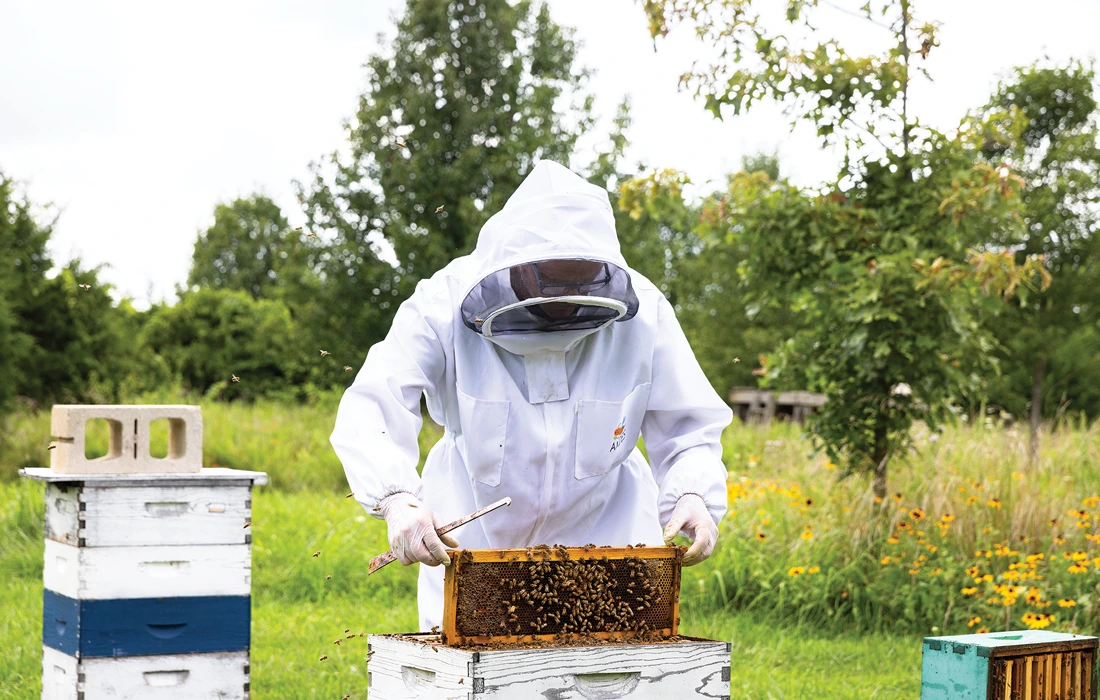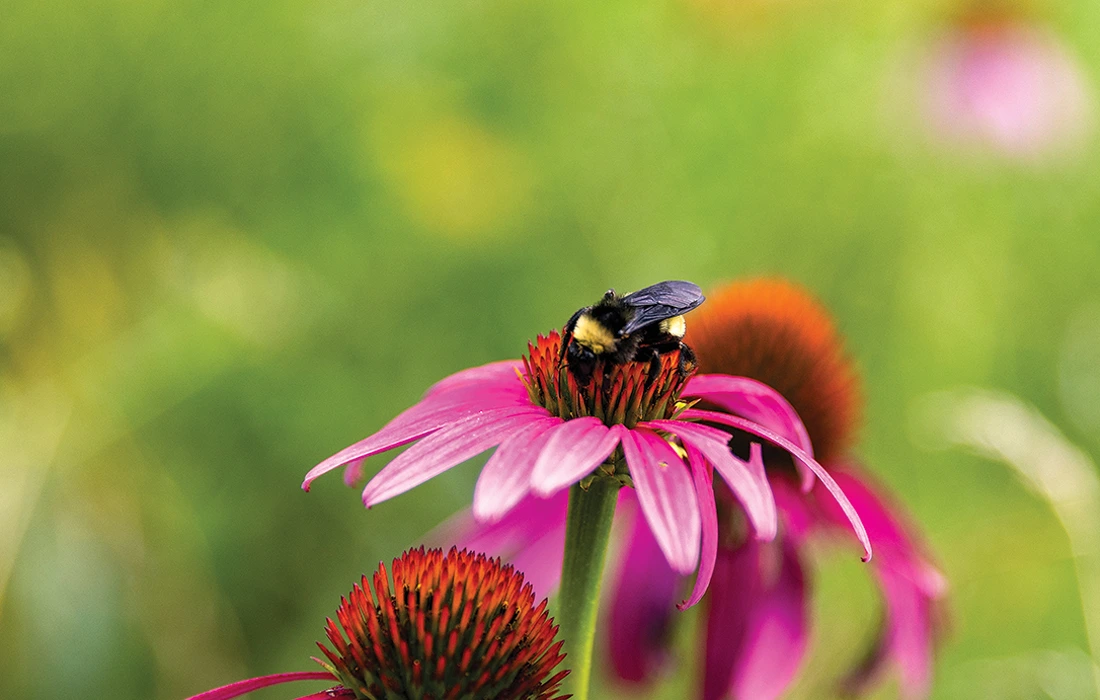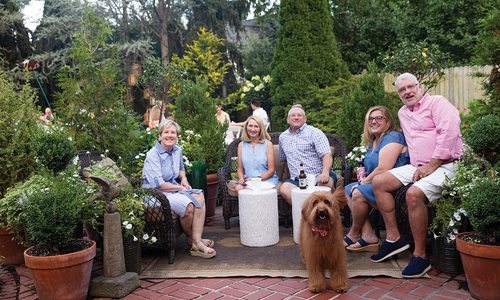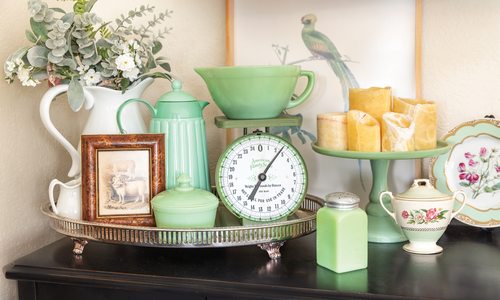
Home
How One Ozarks Military Vet Found Joy in Beekeeping
How one military vet finds healing and joy in the art of beekeeping.
by Heather Kane Kohler
Aug 2025

When Bryan Hood retired from the military after 26 years of service, he never expected to find peace and tranquility in gardening and beekeeping, but that’s exactly what happened. “I was part of Highs for Heroes and went through a program called Warrior Path,” he says. “My big takeaway was the act of being present.”
It’s on his land in Nixa that Hood spends much of his time tending to two wildflower plots and the beehives located between them. Working on his property to cultivate native and experiment with non-native flowers—along with beekeeping—helps him stay in the moment, forget past hardships and avoid stressing about the future. “All the noise goes away and the world just disappears,” says Hood. “I really believe that being present is a huge healer for people.”
Hood began his beekeeping adventure in 2020, after a fellow combat buddy reached out asking if he knew anyone who kept bees. His friend had a hive in a tree on his property and wanted someone to relocate it. That moment sparked Hood’s decision to try beekeeping himself. He brought his son along, and together they cut down the branch the hive was attached to and watched it drop into the bee box Hood had just purchased.
Hood has come far since that day, perfecting his beekeeping skills and researching as much as he can. “I’m always learning, and bees are not something you can really control,” says Hood. “They are still going to do their own thing.”

Creating a good environment for his bees helps make Hood’s honey so special. With 40 to 50 flower species growing in his field, the bees have direct access to a unique blend of pollen and nectar. He only plants perennials, reseeding the field every two years. Each fall he mows the meadows after everything has died and had time to reseed, then tills the fields, turning the soil, mixing the seeds and planting more. “I feel like this method is more natural,” says Hood. “Some people spray the weeds, but I prefer the plow method—it’s more organic and wild.”
The field features an array of native wildflowers like coneflowers, coreopsis, butterfly milkweed, daisies, poppies and cornflower. Hood also experiments with non-native flowers that grow in the Ozarks, like lupine and canola. “The variety of flowers brings a unique flavor to the honey,” he says. “And it’s just really pretty.”
In the spring months, the fields begin to bloom. Once the summer heat hits, the fields and bees flourish. “It’s so cool to watch the fields just erupt with blooms,” says Hood.













